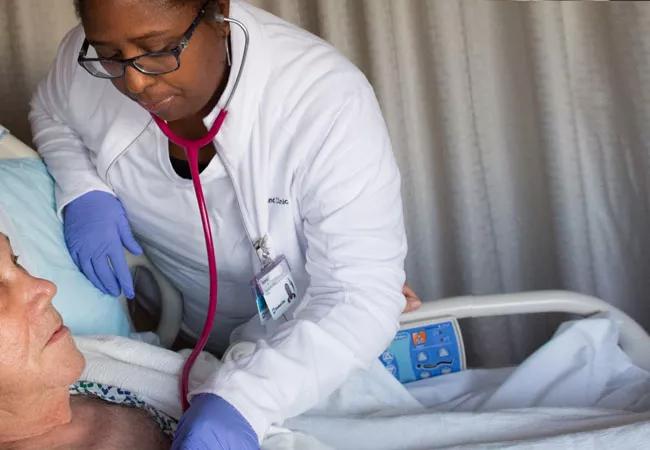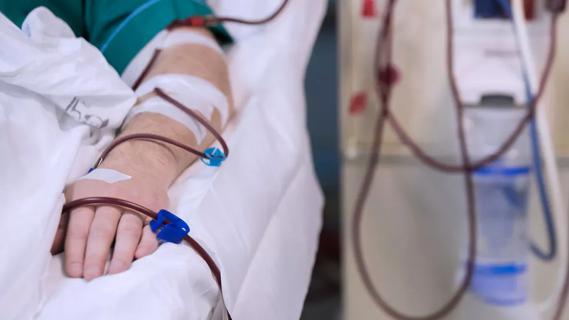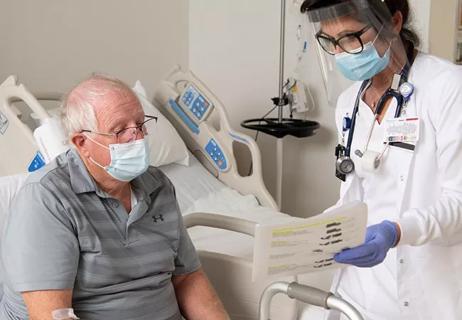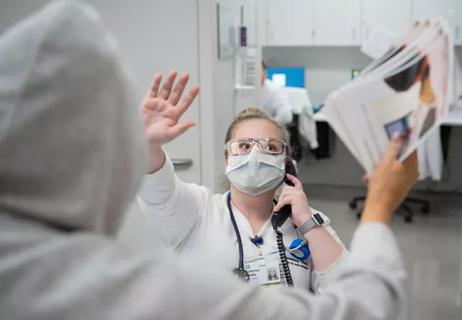Advertisement
Focus on overall health as part of primary care practices

One of the latest buzz phrases in healthcare is population health management. But it’s more than a passing trend. Patients and healthcare systems benefit when outpatient areas follow a model of care that is dedicated to maintaining and improving community health through wellness and prevention.
Advertisement
Cleveland Clinic is a non-profit academic medical center. Advertising on our site helps support our mission. We do not endorse non-Cleveland Clinic products or services. Policy
In 2017, Cleveland Clinic opened a population health unit, known as Cleveland Clinic Care Community. Earlier this year, ConsultQD featured an article on the unit and its first Senior Director of Nursing, Ruthann Gavrilescu, MSN, MEd, BSN. The unit encompasses adult primary care, pediatric primary care, express clinic care and at-home medical care across Cleveland Clinic’s 18 full-service family health centers, 10 regional hospitals and seven nurse-led chronic care clinics.
Among the caregivers who are integral in the operation of Cleveland Clinic Care Community are 50 primary care coordinators embedded in primary care practices. “As our patients become more and more complex, our healthcare system is also getting more and more complex,” says Kristine Adams, MSN, CNP, ACNO of Care Management and Ambulatory Services. “It’s getting more difficult to navigate the healthcare system, and patients are getting overwhelmed. Care coordination is there to support and pad that patient with the resources they need to make things as easy as possible for them.”
Primary care coordinators at Cleveland Clinic, who are all registered nurses, work hand in hand with high-risk patients identified by an internal algorithm that considers patient demographics, disease states, utilization and claims data. “Their primary role is to decrease patient utilization, and they do that in a few ways,” says Adams.
Advertisement
Cleveland Clinic’s care coordinators have been very successful in helping patients. Just recently, one RN shared her work with a diabetic patient. The care coordinator taught the patient to properly record blood sugar levels, connected the patient with a dietitian to improve her eating habits and linked the patient with a diabetic educator to better understand her medications. The patient’s diabetes is now under control for the first time in years.
That patient can now manage her condition on her own – the ultimate goal of care coordinators. “Once patients go on our rolls, we try to work with them for about 60 days,” says Adams. “By 90 days, we want them to graduate.” Part of the reason is capacity: New high-risk patients are always coming into the system. But another reason is that patients should learn to manage their own care. “We try to help people help themselves,” Adams explains.
Care coordinators in the Cleveland Clinic Care Community work in tandem with clinical nurses, medical assistants and physicians. “Care coordinators are one piece of a whole team that helps move the patient forward and get them where they need to go,” says Adams.
Cleveland Clinic followed 4,199 patients cared for by primary care coordinators in its Cleveland Clinic Care Community in 2017. Statistics reflect the success of care coordinators, whose main role is to reduce patient utilization:
Advertisement
Advertisement

Clinicians prepare to deliver lifesaving care in the face of public health threats

Phone triage system reduces call backs and delays in care

New protocol reduces costs, increases patient and caregiver satisfaction

New options benefit caregivers, nursing units and patients

Nurses facilitate preoperative program to educate and prepare patients for ongoing care

Introduces at-home work and new patient screening tool

Health disparities, mental health and more

Ideas for approaches to prevention, response and more